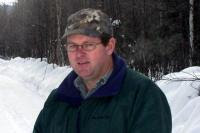The media usually has a tough time reporting on wildland fires. Unlike a structure fire confined to a relatively small geographic area, a vegetation fire can be spread out over many square miles. It can be difficult for even the Incident Commander to maintain situational awareness.
Pity the poor, inexperienced cub reporter who arrives at a rapidly expanding urban interface fire and is expected to size up the whole incident within minutes, usually from standing in one spot at a distance from the fire.
It can take years for a professional firefighter to learn the jargon. We still have reporters calling air tankers “Borate bombers”. Borate has not been used in air tankers since it was briefly tested on fires in southern California in 1956 and found to be a soil sterilant.
Today I was amused at two examples of how the media covers wildland firefighting.
1. A news anchor on CNN was talking live via satellite with a reporter at the Santa Anita fire in southern California. In asking her a question about the 490-acre urban interface fire, the anchor said:
“…. I know these things have a tendency to spread….. “
Well thanks, CNN, for the fire behavior lesson. Glaciers have a “tendency to spread”.
2. In today’s edition of the Rapid City Journal the newspaper had a front page story about volunteer fire departments. The story included three pictures on the front page of volunteers engaged in wildland fire training. (It must have been a slow news day in the Black Hills.) The captions of two of the pictures had these phrases:
“Crews practiced digging and clearing forest ground cover to create breaks where hoses can be run.”
and,
“…a volunteer firefighter in Johnson Siding works with a ground crew practicing clearing forest ground cover to make a path for hoses.”
Well…..rarely do firefighters have to cut a path in order to put in a hose lay. I have only had to do it a few times in extremely dense chaparral. If you can crawl through the vegetation, you can put in a hose lay. Often a hose lay or a “wet line” is put in instead of constructing or digging a hand line.
In the grand scheme of things, these little errors in the newspaper don’t make a lot of difference to the average reader, but to the knowledgeable, it would make you wonder about the accuracy of the rest of the article.
In some areas of the country wildland fire agencies put on a 1-day training class for reporters who cover fire. It covers topics like, safety for reporters, jargon, where a reporter can go and where they can’t go, a little about fire behavior, descriptions of firefighting resources, fire organization, and sometimes even how to use a fire shelter.
If your agency puts on training like this for reporters, leave a comment with a few details.





